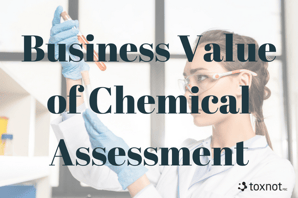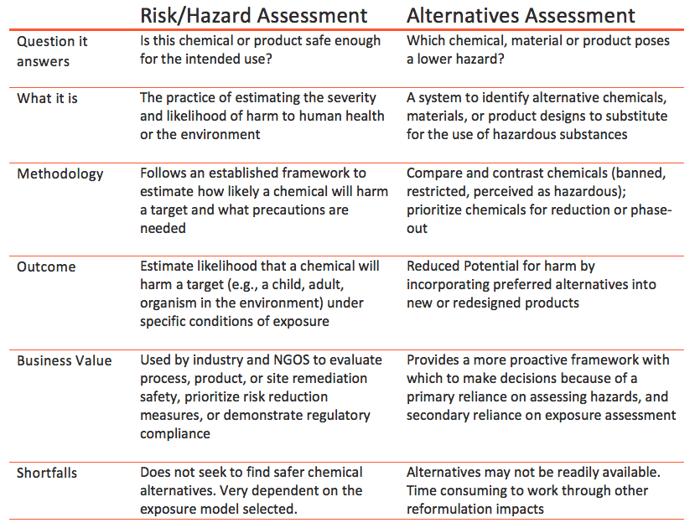 Addressing Risk Assessment & Admirable Substitutions
Addressing Risk Assessment & Admirable Substitutions
Balancing the benefits from chemical science with their potential for health and environmental hazards is a tough act. The innovations made possible from plastics, cleaners, fuels and other chemicals have dramatically enhanced our lives, but determining the quantities that can be safely used, or finding alternative materials with less impact, has not been easy. Let's evaluate your options:
Risk assessments combine a chemical’s hazards with an estimate of how people will be exposed to it to determine the total risk. Unfortunately, it is very difficult to predict all potential exposure scenarios across global supply chains and the full product lifecycle.
An alternatives assessment is a more proactive approach to seek out a different, yet similar, chemical with a lower hazard potential. While alternatives assessments compare chemicals and take a broader approach, the risk assessment approach may still be part of the process if the best alternatives still pose possible hazards.
To more fully define the two approaches, we have combined the working definitions from the American Chemical Society (ACS) and the Health and Green Chemistry & Commerce Council.

- The Risk Assessment method primarily supports the binary decisions required for regulatory actions and has been used for decades. It mitigates risks from chemicals already in use, though it can be difficult to use in redesigning a product with new chemicals or materials. It can also be instructive in educating end users on the appropriate use of a product or chemical. If you use chemicals in your products, your organization is likely already set up for risk assessment based on regulations. This is a valid and necessary part of chemicals safety and regulations, but risk assessments are highly dependent on setting appropriate criteria and accurately modeling exposure. Given these dependencies, risk assessment serves as an appropriate stage gate in product development, but it is unsuitable as more general product design guidance.
- The Alternatives Assessment process is more appropriate to the new product design process. Using the product functional requirements to guide the process, a group of chemicals with lower health or environmental hazards can be selected. Alternatives Assessment uses design-relevant questions. What chemically similar materials have the properties you want in your product, but have lower health and environmental impact? What studies have already been done? Is there a way to assess the differences in a meaningful way?
Choose Preferred Alternatives Ultimately, your organization should employ both alternatives assessments and risk assessments with the goal of picking preferred alternatives early in product design. This will reduce the number of products which require in-depth risk assessments.

When redesigning existing products, automated screening tools can show which regulated chemicals of concern are being used, and you can focus on finding safer alternatives for them. What if a safer chemical alternative is not readily available?
Studies have shown how harmful BPA can be, but two of its first replacements, BPF, and BPS have proven to be even worse. This is an example of a regrettable substitution. Below is a diagram highlighting four ways to substitute hazardous chemicals from your products.
Looking to get started? That’s where we come in. Toxnot was created to help fill this niche part of chemical hazard assessment, by providing hazards screening to start the critical process of alternatives assessment, and help to identify admirable substitutions in your products. Our chemical hazards database contains information on over 50,000 substances and over 46,000 GreenScreen List Translator™ scores.
Toxnot helps you improve health and sustainability across the global supply chain with insight about the chemicals and materials that go into them.
Related Article:
Admirable Substitutions: Preferred Chemistries in the Circular Economy


.png?width=600&name=Twitter%20images%20(1).png)
